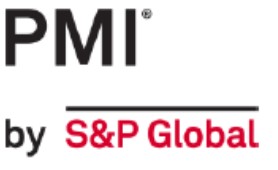The Global Purchasing Managers’ Index (PMI) for manufacturing produced by J P Morgan using the data from S&P Global was unchanged from the June reading of 48.7 and, therefore, level with the post-pandemic low point of December 2022. Output contracted at an accelerated pace and new orders fell for the 13th consecutive month. This trend was spread across all of the sub-groups – consumer, intermediate and investment goods – although employment in the manufacturing sector did edge up having been stable in the two previous months.
The UK manufacturing PMI fell again to 45.3 which also matches the post-pandemic low from last December, although it was slightly better than the flash estimate we reported last week. Here, the rate of contraction in output, orders and employment all accelerated although a further improvement in suppliers’ delivery times also helped to reduce the index. Over-stocking at clients and a general global weakness in business are the main reasons for the weakness in orders. Despite this gloom, there was a small improvement compared to June in the forward looking sentiment.
The Euro-zone also saw a further significant weaking in the sector with the PMI falling to 42.7 – in this case, the lowest reading for 38 months (May 2020) at the height of the initial Covid lockdowns and excluding that period, you have to go back to the global financial crisis in 2008-09 to find similar figures. As in the UK, output, orders and employment all fell at a faster rate than in June with the index also driven lower by improvements in suppliers’ deliveries. Germany and Austria (both 38.8) were exceptionally weak, while only Greece (53.5) has a manufacturing PMI above 50 and with an improvement in the June figure; although they are still negative, Italy and the Netherlands also recorded a better reading than last month.
This trend was also shared in three of the four other EU countries who have a PMI, with Czechia, Hungary and Sweden all above their June readings while remaining in negative territory; Poland, however, saw a further deterioration in its already weak reading.
Outside the EU, but still in Europe, Turkey saw a modest fall in its PMI reading but this was made more significant because it took them below the crucial 50 level for the first time since December 2022. Switzerland saw by far the largest month-on-month reduction in its PMI reading across the countries and regions that we cover in this report and this also meant it recorded the weakest PMI at 38.5 – it is also unique in having a PMI that is below the level it saw at the height of the Covid-pandemic.
There are mixed trends in Asia both in terms of the month-on-month movement and the levels of the manufacturing PMI. China shared Turkey’s fate of seeing a fall in the reading taking it back below 50 (in this case for the first time since April) while there was a smaller fall in Taiwan which was already in negative territory. The PMI in Japan, India and the ASEAN group just edged down from the June reading but with different consequences; Japan (49.6) remains just in negative territory, the ASEAN area (50.8) just in positive territory and India (57.7) has the strongest PMI in our analysis. In this area, only South Korea (49.4) saw its manufacturing PMI improve compared to June – indeed, this is their highest reading since July 2022.
It is in the Americas where we find the best news, although perhaps it would be more accurate to say the least bad news as 4 of the 5 countries are still in negative territory; the optimism comes because only Columbia (48.4) saw its PMI reading fall compared to June. The USA (49.0) saw the largest month-on-month increase in the PMI in this report and there was also a significant rise for Mexico (53.2 and the exception to the negative PMI readings in this region); there were more modest increases for Canada (49.6) and Brazil (47.8).
Across this whole report, only India, Greece, Mexico and the ASEAN block overall have manufacturing PMI readings in positive territory. The individual S&P Global PMI reports are available to download on their web-site at https://www.pmi.spglobal.com/Public/Release/PressReleases but we also have a summary report that charts these trends – this is available to download below. You should note that the PMI readings for Hungary, Sweden and Switzerland are not compiled by S&P Global but can be found with an appropriate internet search (it also means that they are not part of the global PMI calculation).

